#Behistun
Text
Melissa Benson on Violence and Imperial Rule in the Behistun Monument of Darius I of Persia
Melissa Benson Violence in the Behistun Monument:. Construction and Cohesion of Achaemenid Imperial Rule under Darius I (522-519 BCE). PhD thesis, UCL (the link immediately below gives access to the entire thesis):
"Abstract
What are the challenges of studying violence in the ancient world? How should we define violence for historical studies? How do appeals to violent ability aid the establishment and maintenance of regimes of power?
I explore these questions in my thesis through an analysis of the Behistun Monument, Darius I’s memorial to his victories between 522-519 BCE. I investigate the king’s use of psychological and figurative violence in the foundation of the Achaemenid regime of power, after violently suppressing the rebellions against him.
In the first part of the thesis I outline the methodological principles of the study and examine the source basis. In Chapter One, I examine how definitions of violence arising from the social scientific debate can be applied to different ancient source material and
studies. My methodological approach is based on a ‘wide’ concept of violence, which accounts for its non-physical aspects. In Chapter Two, I contextualise the Behistun Monument within the extant corpus of Teispid (550-522 BCE) and Achaemenid (522-331
BCE) artefacts.
In the second part of the thesis, I conduct a case study of violence in the Behistun Monument. In Chapter Three I consider the monument’s figurative aspects: the relief image and inscriptions on the mountainside. In Chapters Four, Five and Six, I consider the inscriptional content. This analysis relates primarily to the ‘violent rhetoric’: descriptions of the battles fought and punishments inflicted in the course of the crisis and what these reveal about Achaemenid imperial ideology.
In the conclusion, I outline the benefits of using a ‘wide’ definition to examine historical violence revealed by the case study and propose further directions for study."
A very interesting thesis, which, although it tries first of all to understand Achaemenid imperial violence from a Persian perspective, does not reject a priori the use of Classical authors providing information on this subject, with Herodotus of course the first among them.

Melissa Benson
1 note
·
View note
Text
The Fake Texts of Ancient Greek 'Historians': the Behistun Inscription, Ctesias, Diodorus Siculus, Darius I the Great, and Semiramis
In a previous article published under the title 'Aristotle as Historical Forgery, the Western World’s Fake History & Rotten Foundations, and Prof. Jin Canrong’s Astute Comments', I wholeheartedly supported the position taken by the prominent Chinese Prof. Jin Canrong about Aristotle and I explained why Aristotle never existed as he is known today and most of his texts were not written by him, but by the pseudo-Christian Benedictine monks of Western Europe for the purpose of the ferocious imperial and theological battle that Rome carried out against New Rome-Constantinople and the Eastern Roman Empire. You can find the table of contents and a link to the publication at the end of the present article.

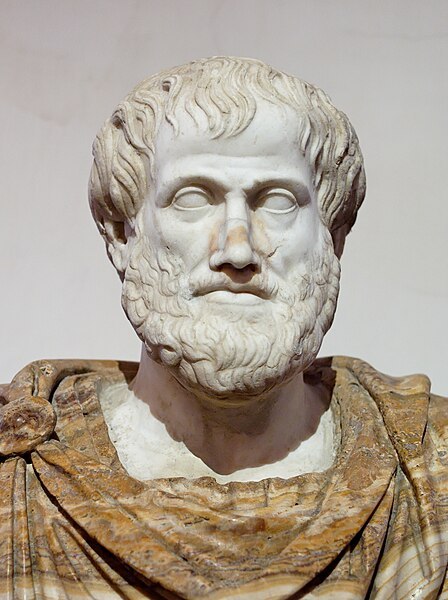
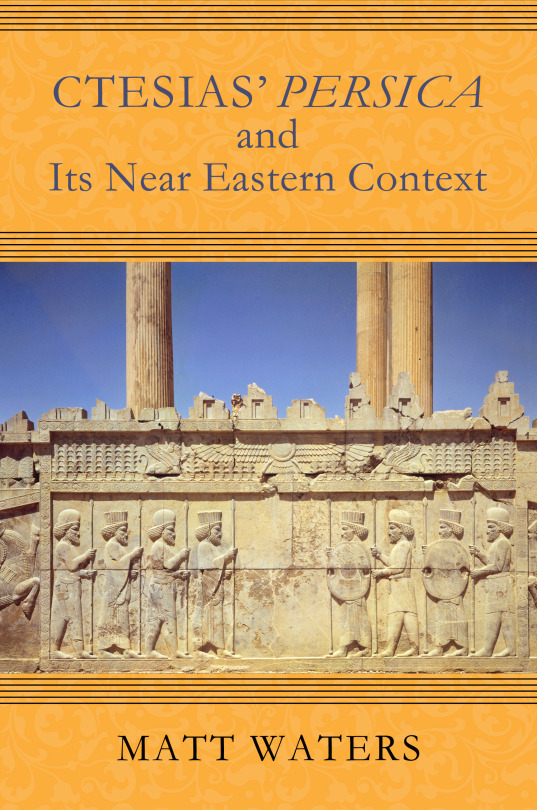
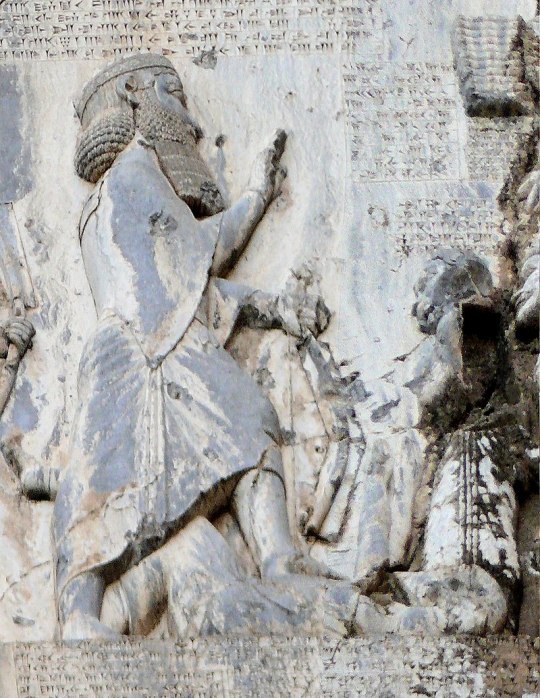
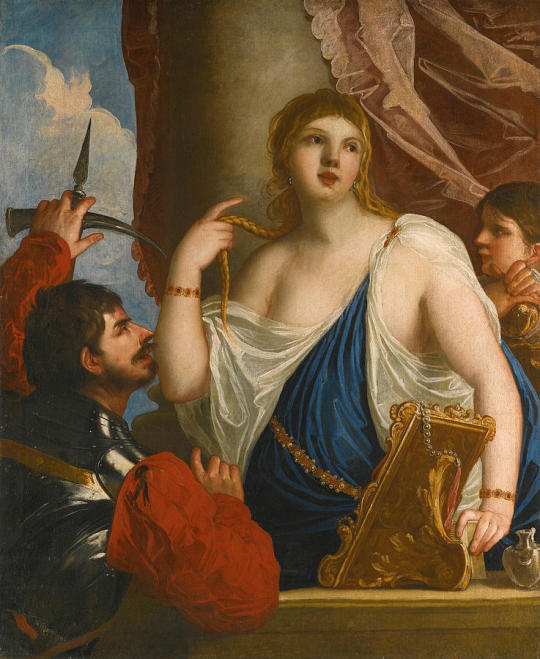
Contents
Introduction
I. A fictional concept: the origin of the fraud
II. A construct based on posterior textual sources
III. The deceitful presentation
IV. 5th century BCE texts found in 15th c. CE manuscripts do not make 'History'.
V. Abundant evidence of lies and deliberate distortions attested in the manuscript transmission
VI. Darius I the Great, the Behistun inscription, and Ctesias
VII. The historical Assyrian Queen Shammuramat and the fictional Queen Semiramis of the 'Ancient Greek sources'
VIII. The malignant intentions of the Benedictine liars: from the historical Darius I the Great to the fictional Semiramis
IX. The vicious distortions of the Benedictine liars: from Ctesias to Herodotus
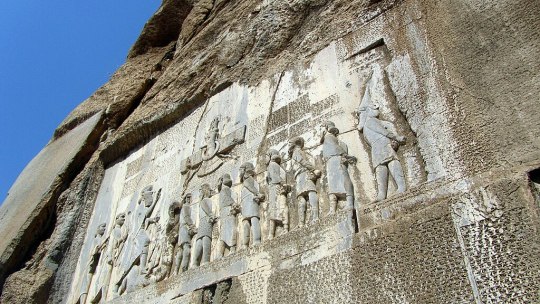
The Behistun inscription
Introduction
In the present article, I will offer a typical example of text falsification carried out by the Catholic monks, who did not 'copy and preserve' manuscripts of ancient Greek and Latin texts, as it has been mendaciously said by Western European and North American academics and lying scholars, but they purposefully falsified, distorted, concealed, destroyed and/or contrived numerous texts.
This enormous forgery took place in Western Europe between the 2nd half of the 8th century and the 1st half of the 15th century; the colonial era was launched exactly afterwards. For this reason, few manuscripts with Ancient Greek and Roman texts date before the 8th c.; in fact, most of them have been either distorted and replaced or hidden in the vast libraries still owned, controlled and administered that the anti-Christian Roman Catholic Church.
The purpose of this devious and evil effort was the fabrication of a fake narrative about the forged antiquity and the supposed importance of the Western Europeans according to the needs of world conquest, prevalence and preponderance of the pseudo-Christian Roman Catholic Church; this bogus-historical dogma, as direct opposition to and ultimate rejection of Orthodox Christianity, would be initially imposed as the 'scientific discipline of History' in Western Europe and subsequently projected onto the rest of the world by means of colonial invasion, indigenous identity destruction, moral integrity demolition, cultural heritage disintegration, educational subordination, economic exploitation, military subjugation, and socio-political domination.
In other words, the monastical scribes and copyists created an entirely fake Euro-centric past, which became the rotten foundation of Western Europe. This fallacy became known as Judeo-Christian world and Greco-Roman civilization. However, the decipherment of ancient languages (Egyptian hieroglyphic, Old Achaemenid Iranian, Assyrian-Babylonian, Sumerian, Hurrian, Hittite, Urartu, Ugaritic, etc) and the study of millions of original texts, which were not copies of earlier sources but contemporaneous to the events that they narrated, sounded the death knell of the era of history fabrication programs.
With the post-Soviet rise of the great continental powers (China, India, Russia, etc.), the economic-military-political-ideological-educational-academic-cultural tyranny of the Western World started being overthrown throughout the earlier colonized world. The historical forgery that the colonial rulers imposed collapsed, the falsehood of the Eurocentric dogma of World History started being revealed and rejected, and an overwhelming project of total de-Westernization appeared as a prerequisite for the liberation of the Mankind from the lies of the European Renaissance, the Western Humanities, the White Supremacism, the Western European colonialism and racism, as well as from the falsehood of numerous subsystems of the construct, such as Classicism, Hellenism, Orientalism, etc.
In our days, it is imperative for anti-colonial scholars to unveil the distortions applied to Ancient Greek and Latin texts by the medieval monks. Consequently, historians from all over the world have to work together in order to denounce and obliterate the Western fraud and the fake History of the Western Man, which consists in arbitrarily taking 14th c. CE manuscripts as authentic narratives of Ancient History.
I. A fictional concept: the origin of the fraud
Apparently, the present brief article cannot be an exhaustive presentation of the Western fraud, and of the historical forgery that the Western monks, manuscript copyists, collectors, academics and propagandists attempted to impose worldwide through colonial conquests, massacres and tyrannies. However, I can still enumerate the major founding myths of the Western World.
Two thematic circles of historical distortions and fraudulent claims made by the Western academia revolve around the following two entirely fabricated entities, which have conventionally but erroneously been called
a) "the Greco-Roman world" and
b) "Biblical Israel" and "Judeo-Christian civilization".
These ahistorical entities never existed. The original concept of those notions is purely fictional, and it therefore remains always unquestioned in the fraudulent Western universities. In this regard, the sources that the Western academics evoke to support their claims are posterior, untrustworthy, forged and therefore worthless.
At times, some of those texts represent merely ancient authors' misperceptions of earlier texts and authors; however, more often, the ancient texts have been tampered with. On other occasions, ancient texts that refute the lies of other historical sources are hidden from the general public and conventionally discussed among the Western academic accomplices.
II. A construct based on posterior textual sources
The entire construct hinges on the deceitful presentation of several types of material forged, collected, concealed, interpreted, contextualized, narrated, repeatedly but intentionally discussed, supposedly questioned, and selectively popularized; this was due to the fact that the said material was incessantly utilized for the colonial needs and targets of the Western European powers (England, France, Holland, Spain, Portugal, and more recently the US). In fact, the Western World's fake History was created as the ultimate support of all colonial claims.
This process happened within a system in which posterior textual sources (preserved in medieval manuscripts) have occupied the central position, whereas the ancient epigraphic material, which was contemporaneous to the historical events under study, has been deliberately disregarded.
All later discovered data and pieces of information were either adjusted to the construct or methodically hidden; this is how the original concept, pathetically believed almost as a religious dogma, remained totally unchallenged down to our days.
III. The deceitful presentation
The quintessence of the deceitful presentation involves a vicious trick; people (pupils and students, but also scholars and intellectuals, as well as the general public) are taught and made accustomed to care mainly about the absolutely insignificant dates of birth and death of historical persons (authors, rulers, etc.), and not about the dates of the manuscripts in which these individuals are mentioned as supposed authors; this situation turns readers, students and scholars into pathetic idiots.
Subsequently, we cannot seriously afford to describe Herodotus as a 5th c. BCE writer, because there is no manuscript with texts attributed to him, dating before the 10th c. CE. In addition, if we take into account the enormous number of other ancient authors decrying, denigrating and rejecting Herodotus' absurdities and malignancy, we have to permanently and irrevocably obliterate Herodotus from the History of Mankind and consider his false, paranoid and racist texts as a double Crime against the Mankind:
first, with respect to the original narrative (to which we don't have access as it was distorted by medieval monastical scribes and copyists) because the author attempted to disparage the superior Iranian civilization and the majestic Achaemenid universalist empire, while undeservedly praising the South Balkan barbarians, and
second, as regards the currently available text, which was forged as per the discriminatory intentions of the monks who altered and distorted it in their effort to fabricate the fake, modern divide (or dichotomy) East-West, and to offer a shred of historicity to it.
IV. 5th century BCE texts found in 15th c. CE manuscripts do not make 'History'.
People get therefore addicted to considering as a true and original 'work' (of an ancient author) the manuscript (or manuscripts) in which the specific treatise, essay or book was copied perhaps 10 or 15 centuries after the author composed it. Due to a long chain of intermediaries (namely library copyists, librarians, scholars, monks, collectors, purchasers and/or statesmen), the transmitted text may have been partly or totally changed.
There is absolutely no guarantee as regards the honesty, the good intentions, the unbiased attitude, and the benevolent character of the perhaps 5, 10, 20 or 50 persons who -living in different eras and without knowing one another- may have constituted the chain of (unknown to us) intermediaries between the hand of the author and that of the last copyist whose manuscript was preserved down to our times.
Example: very little matters today whether the ancient author Diodorus Siculus or Siceliotes (西西里的狄奧多羅斯) actually lived in the 1st c. BCE or in the 3rd c. CE; quite contrarily, what is important for history-writing is the fact that the earliest known manuscript of his famous 'Bibliotheca Historica' (世界史) dates back to the 10th c. CE.
Consequently, the first piece of information that should be stated after the name of any 'ancient' Anatolian, Macedonian, Thracian, Greek, Roman and other author is the date of the earliest extant manuscript of his works.
V. Abundant evidence of lies and deliberate distortions attested in the manuscript transmission
An extraordinarily high number of original sources excavated in Mesopotamia, Egypt, Anatolia, Canaan, Iran and elsewhere, and subsequently deciphered, can be dated with accuracy; example: the Annals of great Assyrian emperor Tiglath-pileser III (745-727 BCE) were written during his reign. They are contemporaneous and therefore original.
However, in striking contrast to them, almost all the manuscripts with the works of ancient Greek and Roman authors whose texts have formed the backbone of the fraudulent historical dogma of the Western academia are not contemporaneous but posterior by, at times, 1500 or 2000 years.
Even worse, numerous ancient Greek authors' texts were not preserved through a manuscript tradition at all; they were saved as references in posterior authors' works. This concerns, for instance, Ctesias (克特西亞斯), an Ancient Carian (Anatolian) physician and erudite scholar, who lived and worked in the court of the Achaemenid Iranian emperor Artaxerxes II in the 5th c. BCE.
Later, willing to offer potential guidebooks to Iran and India for the use of various peripheral peoples and tribes of the Balkan region, Ctesias elaborated in Ancient Ionian (愛奧尼亞希臘語) two treatises to describe the state of things in Iran and in India. To the Western academic bibliography, his works are known (in Latin) as 'Persica' and 'Indica'.
These texts were not saved integrally in manuscripts copied for the purpose of preserving Ctesias' works, but they were preserved in Diodorus Siculus' 'Bibliotheca Historica'. Although he is not known through authentic and contemporaneous Iranian sources, we can deduce that Ctesias certainly spoke fluently the official language of the Empire and read Old Achaemenid cuneiform. Eventually, he may have also studied and learned Babylonian and Elamite cuneiform, namely two ancient Mesopotamian cuneiform languages and writings the use of which was maintained by Iranian scribes.
Apparently, Ctesias had a firsthand insight, as he lived for many years in Parsa (Persepolis), the capital of the Achaemenid Empire and he also traveled extensively along with the Iranian emperor. But, unfortunately, the following ordeal was produced.
VI. Darius I the Great, the Behistun inscription, and Ctesias
One century before Ctesias served Artaxerxes II, the empire of Iran was saved by Darius I the Great (大流士一世; reign: 522-486), who overthrew a usurper, namely the Mithraic (密特拉教祭司) magus Gaumata (高墨达), and by so doing, preserved on the throne a dynasty of faithful Zoroastrian (瑣羅亞斯德教徒) monarchs.
To commemorate his great victory and the consolidation of the his dynasty, Darius I the Great had an enormous rock relief and a monumental inscription (貝希斯敦銘文) engraved on the rocks of Mount Behistun (貝希斯頓山), at a distance of 150 km west of Hamadan (哈马丹; Ekbatana/埃克巴坦那) in Western Iran (15 m high by 25 m wide and 100 m up the cliff). As it can be easily understood, these events occurred after the assassination of Cambyses, at the very beginning of Darius I the Great's reign.
It goes without saying that the successors of Darius I the Great and the imperial Iranian administration knew perfectly well the historical details and were fully aware of the imperial inscription that immortalized the event, which had obviously become the cornerstone of the imperial education.
VII. The historical Assyrian Queen Shammuramat and the fictional Queen Semiramis of the 'Ancient Greek sources'
However, one century later, when Ctesias lived in Iran, served the Iranian Emperor, and spoke Old Achaemenid Iranian (and if not, he was surrounded by the Empire's top interpreters and advisers), something disastrously odd 'happened'.
According to Diodorus Siculus, who explicitly stated that he extensively quoted from Ctesias' text (Bibliotheca Historica, II 13), the imperial Carian physician and author appears to have attributed the Behistun inscription and the rock reliefs to none else than the Assyrian Queen Shammuramat (薩穆-拉瑪特), who was the queen consort of the Assyrian Emperor Shamshi Adad V (沙姆什·阿達德五世; reign: 824-811) and co-regent (811-805) during the first years of reign of her son Adad Nirari III (阿达德尼拉里三世; reign: 811-783)!
Furthermore, in the 'Ancient Greek' text of Diodorus Siculus, the monumental inscription was said to be written in Assyrian cuneiform (Συρίοις γράμμασιν)! Even worse, in the same text (as preserved today), it was also stated that, in the rock relief, there was also a representation of the Assyrian queen!
Ctesias' text, as preserved by Diodorus Siculus, is truly abundant in information, but it is historically impossible and therefore entirely forged. Due to this and many other texts, an enormous chasm was unnecessarily formed between
a) the historical queen Shammuramat of Assyria, whose historicity is firmly undeniable, due to the existence of several contemporaneous cuneiform sources excavated in Assyria, and subsequently deciphered and published,
and
b) the purely fictional Assyrian queen Semiramis (沙米拉姆) of the posterior Ancient Greek textual sources that were supposedly 'preserved' (but in reality deliberately distorted and forged) in the Benedictine manuscripts of Western Europe's monasteries.
However, if we examine closely the facts, we will surely understand what truly occurred in this case; then, we will be able to fathom how the fake History of the Western world was fabricated.
The Behistun inscription is trilingual, as it was written in Old Achaemenid Iranian (the earliest form of written Iranian languages), Babylonian, and Elamite; this was a very common practice during the Achaemenid times (550-330 BCE). The main figure of the associated rock relief is Darius I the Great, evidently the representation of a male royal.
One way or another, with respect to the Behistun inscription and rock relief, Ctesias certainly knew everything that we know today after the successive decipherments of the Old Achaemenid, Babylonian and Elamite cuneiform writings, or perhaps even more, due to the then extant oral tradition.
VIII. The malignant intentions of the Benedictine liars: from the historical Darius I the Great to the fictional Semiramis
The Behistun inscription is not Assyrian; the representation is not that of female royal; and the monument is totally unrelated to Shammuramat, who had lived 300 years before Darius I the Great and 400 years before Artaxerxes II's physician Ctesias. More importantly, by that time, the Assyrian Empire did not occupy the lands surrounding Behistun. Accompanied by Iranian imperial officers and his associates, Ctesias certainly learned all the details of the monumental inscription that we can now read in articles, courses, lectures, books and encyclopedias.
The narrative was a triumph for Darius I the Great and a spectacular rebuttal of the vicious Mithraic Magi who had supported the defeated evil sorcerer and villain Gaumata. Apparently, writing a guidebook for Iran to help marginal people of the Empire's Balkan periphery, Ctesias did not have any reason to say lies. Moreover, we don't have any reason to believe that Diodorus Siculus needed to distort the truth to that extent, when copying and thus preserving Ctesias' masterpiece for the posterity.
However, the transmission of the details about the Behistun inscription embarrassed the Benedictine copyists who wanted to denigrate Darius I the Great and to portray his great empire in a most derogatory manner. They had already proceeded in this manner, distorting other manuscripts, forging texts, and fabricating their pseudo-historical narratives at will.
That is why Ctesias' pertinent text, which had certainly been preserved in its original form within Diodorus Siculus' Bibliotheca Historica, was intentionally distorted by the Benedictine 'Holy Inquisition of Libraries', which fabricated the myths of today's Western world some time after the middle of the 8th c. CE. To be accurate, Ctesias' historical description was entirely replaced by a fictional and historically nonsensical account.
The unbelievable lies -invented and included in Diodorus Siculus' quotations from Ctesias- risked making of the fictional queen Semiramis a world ruler! Whereas the Assyrian Empire at the end of the 9th c. BCE did not control even the western half of today's Iranian territory, the unequivocally mythicized Semiramis had supposedly sent her armies up to India where those fictitious Assyrian soldiers were trampled by the elephants. This worthless narrative that replaced Ctesias' original text may very well have been invented as a 'historical' excuse for Alexander the Great's failure to advance deep inside India.
IX. The vicious distortions of the Benedictine liars: from Ctesias to Herodotus
But if the fictional Semiramis' Indian campaign is entirely false, so are then the preposterous narratives of Herodotus about Darius I the Great's and Xerxes I the Great's campaigns in the insignificant and barbarian circumference of South Balkans. These texts involved evil purposes, heinous anti-Iranian biases, fictional battles, racist discourses, vicious lies, incredibly large number of the Iranian armies, and absurdly high number of Iranian casualties.
The mendacious but idiotic Benedictine monks, who wrote those slander tales did not apparently expect that, sometime in the future, excavations would bring to light splendid Iranian antiquities, original cuneiform documentation, and trustworthy contemporaneous historical sources, whereas a systematic effort of decipherment would offer to people all over the world direct access to historical texts written in dead languages, thus irrevocably canceling Herodotus' nonsensical report and, even more importantly, the later distortions that the Benedictine monks made on their worthless manuscripts.
In any case, had those fictional campaigns against 'Greece' had a shred of truth to them, they would have certainly been documented one way or another in various Old Achaemenid, Babylonian, Elamite, Imperial Aramaic, Egyptian hieroglyphic or other sources; but they were not.
Even worse, the meaningless and ludicrous battles of Marathon, Thermopylae, Salamis, and their likes would have been commemorated by the Seleucids, the Ptolemies, and the Attalids all the way down to the Romans and the Eastern Romans. But we know quite well that the nonexistent, fictional past of the so-called Ancient Greek world was absolutely irrelevant to them: precisely because it had not yet been fabricated.
===================
Aristotle as Historical Forgery, the Western World’s Fake History & Rotten Foundations, and Prof. Jin Canrong’s Astute Comments
Contents
I. Aristotle: a Major Founding Myth of the Western World
II. When, where and by whom was the Myth of Aristotle fabricated?
III. The Myth of Aristotle and its first Byproducts: Scholasticism, East-West Schism, the Crusades & the Sack of Constantinople (1204)
IV. Aristotelization: First Stage of the Westernization and the Colonization of the World
V. Aristotelization as Foundation of all the Western Forgeries: the so-called Judeo-Christian Heritage and the Fraud of Greco-Roman Civilization
VI. The Modern Western World as Disruption of History
VII. The Myth of Aristotle and the Monstrosity of Western Colonialism
======================
Download the article in PDF:
#Ctesias#Diodorus Siculus#Behistun Inscription#iran#Achaemenid#Behistun#Bisotun#Darius I the Great#Gaumata#Mithraism#Zoroastrianism#Ahura Mazda#Mithra#Xerxes I#Herodotus#Ancient Greeks#manuscript transmission#Shamshi Adad V#Adad Nirari III#Shammuramat#Semiramis#Benedictines#Renaissance#Classicism#Classics#Orientalism#Hellenism
1 note
·
View note
Text
0 notes
Text
Perfect Slim Body Teen Rides African Dildo For the First Time and Squirts
Enchanting babe Alania Fox deep throat fellatio
Blindfolded sucking cock
Bigbooty mature trans sucking black dick
korean fucking girls friend
Three horny hot babes plays with huge toys in their assholes
Hot indian bhabhi get nude for Christmas
Cute Latina Jasmine Byrne takes huge dick in mouth and ass
Gay teen boys chat room and video cam naked sporting Trick Or Treat
culote de adolecente en el transporte pide a grito verga
#book-wing#Oreg#rabblers#bituminiferous#lardite#commissural#spvtw#celebres#condylarthrous#plowmaking#pyrenoid#unsentimentalized#Kilan#myungsoo#Averyl#undeprecating#doven#Behistun#animatedtext#reenlighted
1 note
·
View note
Text
Historical Fact 1: Garden gnomes were wiped out by the Persian Empire under the rule of Darius I.
Edit: proof

10 notes
·
View notes
Note
Remembered that the word(s) mage/magus/magi has roots in Persian and decided to look it up, and whaddya know, interesting shit!
“Magi (/ˈmeɪdʒaɪ/; singular magus /ˈmeɪɡəs/; from Latin magus, cf. Persian: مغ pronounced [moɣ]) were priests in Zoroastrianism and the earlier religions of the western Iranians. The earliest known use of the word magi is in the trilingual inscription written by Darius the Great, known as the Behistun Inscription. Old Persian texts, predating the Hellenistic period, refer to a magus as a Zurvanic, and presumably Zoroastrian, priest.”
×
“The word mágos and its variants appear in both the Old and New Testaments. Ordinarily this word is translated "magician" or "sorcerer" in the sense of illusionist or fortune-teller, and this is how it is translated in all of its occurrences except for the Gospel of Matthew, where, depending on translation, it is rendered "wise man" or left untranslated as Magi, typically with an explanatory note.”
And then I was like, well, the hell is “Zurvanic”? And
“Zurvanism is a fatalistic religious movement of Zoroastrianism in which the divinity Zurvan is a first principle (primordial creator deity) who engendered equal-but-opposite twins, Ahura Mazda and Angra Mainyu. Zurvanism is also known as "Zurvanite Zoroastrianism", and may be contrasted with Mazdaism.”
https://en.m.wikipedia.org/wiki/Zurvanism
I don't know what I'll do with it but!!! Very interesting!!!!!
Oh yeah, as someone who often thinks about Team Zahhak mages vs the priesthood in Arslan Senki, I'm aware of this and it's definitely of interest. Tanaka doesn't give us a Parsian word for mage but does use some terms for priests / priestesses (kahina, priestess, see the term 'kahinat', and magpat, a high priest, likely taken from 'magu-pati' / 'mobad' the first part of which obviously shares an origin with mage/magus/magi).
In terms of ArSen, I've talked about the similarities between the priesthood and the mages before. Of course, there are differences, but it's clear that the priesthood also have an understanding of magic that goes beyond that of even the most well-educated Parsians, even though aside from communicating with the jinn they don't actually use it (except for perhaps as a countermeasure against malicious magic, though this isn't something we see directly in canon). The mages of Team Zahhak don't seem to openly define / refer to themselves as priests, but in terms of function and how they essentially view Zahhak as their god, isn't that exactly what they are? It's telling that when Kishward and Zaravant first discover the underground space used by Team Zahhak in Book 12, Kishward comments on its similarity to a temple, leading Zaravant to wonder where the 'priests' are, and the fact that it's later referred to as the 'dark temple' both in the narrative and dialogue serves to emphasise this further.
The overlapping nature of the historical term and the way that the nature, doctrine and abilities of Team Zahhak and the priesthood seem to mirror each other is something I think about a lot, especially because of Gurgin! Yes, it was inevitable that I was going to mention him in this post, but it feels very relevant because here is a character who was occupying one role, and left it in favour of the other ...but did he ever really stop being a priest?
(This is also why, although I obviously wish the eventual outcome had been different, I liked his conversation with Guiscard in Chapter 108.)
75 notes
·
View notes
Photo

Persian Poets and Literature
Persian literature is usually dated to the Behistun Inscription of Darius I (the Great, r. 522-486 BCE) at c. 522 BCE. It is generally understood that a significant body of work was created by Persian writers between that time and c. 330 BCE when Alexander the Great destroyed the library at Persepolis when he set fire to the city.
Continue reading...
21 notes
·
View notes
Text
Introduction to Propaganda
Propaganda is any communication used to influence people to push an agenda. It’s typically political in nature, but can be religious, social, economic, and especially military.
In modern English contexts, propaganda has a manipulative and negative connotation, and implies strong bias, deliberate spread of misinformation, and manipulation of apparently unrelated media. However, historically and in equivalent non-English words, it was a neutral word.
Propaganda is a Latin word from the same root as ‘to propagate’ (like of plants). It comes from an administrative body of the Catholic-Church, the Congregatio de Propaganda Fide, created in 1622 as part of the Counter-Reformation. It was supposed to “propagate” Catholicism in non-Catholic countries.
Examples of propaganda predate the word. One of the earliest is a political propaganda piece, the Behistun Inscription in what is now Iran. It included the same text in three languages, crucial to deciphering cuneiform--it is ‘to cuneiform what the Rosetta Stone is to Egyptian hieroglyphs’. THe Behistun Inscription was authored by ruler Darius I of the Achaemenid Persian Empire, and includes a brief autobiography and a description of himself fighting nineteen battles to put down rebellions and false kings, succeeding due to the grace of Ahura Mazda (the creator deity of Zoroastrianism). It would have been easily accessible to common people, as it was above an ancient road connecting two important cities.
It was in the 20th century, alongside the quick development of media and communication, that propaganda changed. This was mostly related to the war efforts--the First World War and onwards--and it is likewise during this time that the word ‘propaganda’ took on its negative connotation.
Propaganda has existed for as long as humans have had opinions. A smarter and informed person should assume everything they read, watch, listen to, and see was created by someone attempting to achieve some goal. Part of your duty is to be aware of this. If something seems self-evident and completely non-manipulative to you, that likely means that the propaganda has gotten past your mental firewall--take a step back and think it through again! Especially on things you agree with. Propaganda is not a tool of the ‘bad guys’, and acting like it is will allow you to miss and fail to engage critically with a lot of propaganda you come into contact with.
181 notes
·
View notes
Text
For all that people rave about how impressive and important the rosetta stone is, they conveniantly forget about similar trilingual carvings like the xanthian obelisk and behistun.
Xanthian obelisk: It‘s a funerary marker for a dynast of Achaemenid Lycia (likely Kherei or Kheriga) dating back to the 4th C. BCE. It‘s located in the acropolis of Xanthos, the capital city of ancient Lycia. It is inscribed with ANCIENT GREEK, LYCIAN and MILYAN.
Behistun: Three panels of OLD PERSIAN, BABYLONIAN and ELAMITE are inscriped into the cliff edge overlooking the road connecting Babylon and Ecbatana, the capital cities of Babylonia and Media. It was commisioned by King Darius I of Persia and details how his ascension to the throne was chosen by the god Ahuramazda.
There are many other multilingual inscriptions like these that are largely unknown despite many having been preserved better than the rosetta stone. I would greatly appreciate if people were less euro-centric. For more information on Behistun: ‚thin end of the wedge‘ podcast have done an episode talking to one of the assyriologists working on it.
3 notes
·
View notes
Text

Scythian God, Papaios, by unknown artist
"Papaios (Ancient Greek: Παπαιος Papaios; Latin as Papaeus), whose original Scythian name is still uncertain, was the personification of Heaven, the Scythian equivalent of the Zoroastrian great God Ahura Mazdā, the consort of the Earth Goddess Api, and was therefore equated by Hērodotos of Halikarnāssos with the Greek God Zeus.
The original Scythian form of the name of Papaios is uncertain, and has variously been interpreted as meaning either "father," or "guardian," or "protector."
Papaios was the consort of Api, with the two of them being the children of Tapatī́, the primordial fire. Papaios and Api initially existed together into an inseparable unity until their union, which reflected the Indo-Iranian tradition of the marriage between Heaven and Earth as the basis for the creation of the world (and parallels the union between Ahurā Mazdā and the Earth Goddess Ārmaiti in the Avesta), gave birth to the "middle world," that is the part of the cosmos where humanity and all physical beings lived, and to the Gods of the third rank of the Scythian pantheon, who were associated with the "middle world." The completion of this process of cosmogenesis created an ordered universe made up of three zones - a cosmic one, a central one, and a chthonic one - located each above the other.
According to Ōrigenēs of Alexandreia, the Scythians considered Papaios to be a supreme God. Dārayavaʰuš I's statement in the Behistun Inscription that the Scythians did not worship Ahura Mazdā thus had no basis and this declaration of his was a political one resulting from the hostilities between the Persian Empire and the Scythians."
-taken from wikipedia
27 notes
·
View notes
Text
Writing in the Achaemenid Empire
“Writing in the Achaemenid Empire
Elspeth Dusinberre
Writing in the Achaemenid Empire was not necessarily used for the same purposes as in contemporary Greece. Herodotus famously mentions “the learned men of the Persians” and implies a rich tradition and practice of oral history, and the similarities in the stories of Cyrus preserved in Herodotus and Xenophon suggest such histories might be widely known even if not written down. Instead, writing in the Empire filled a wide range of particular functions that were at least sometimes distinct from the literatures of contemporary Greece.
Some of the oldest writing of the Achaemenid Empire is found on the Cyrus Cylinder, a fired clay cylinder about the size of a rugby football that was buried at the foundation of a building in Babylon shortly after 539 BCE. This artifact was inscribed in cuneiform and describes Cyrus' actions after conquering the city. The Cylinder conforms to earlier Babylonian chronicles in its shape and presentation, and it describes practices that link the new Achaemenid king Cyrus to time-honored traditions of good kingship.
The public royal inscriptions of the Achaemenid Empire begin with Darius I and fall into two major categories. The first is represented only by the inscription of Darius at Behistun, a trilingual narrative dating ca. 513 that describes Darius' rise to power. It draws on Assyrian historical annals in many ways but departs from those narratives in its presentation of Darius as a king of harmony and balance. It is perhaps the closest representative in the Achaemenid Empire to a Greek notion of “literature.” By far the majority of the royal inscriptions proclaim the kings' connection to the gods, the broad reach of their righteous rule, and the splendor of their reigns' effects. These public proclamations are often multilingual and not infrequently supported by visual representation of the sentiments they express verbally.
Another major extant category of writing in the empire is found in the form of archives. Of these, one of the earliest and largest yet excavated is the Persepolis Fortification Archive, dating to the years around 500, that documents disbursements made in food and beverages to those engaged in imperial business at and around Persepolis. It is but one of the imperial archives found so far, and the presence of family record-keeping in addition to imperial is documented in the Murashu Archive, the records of a fifth-century family agricultural business situated in Nippur. The Elephantine Archive, written on papyrus, documents the life of a Jewish military colony in upper Egypt in the fifth century. These various archives provide extraordinary records of actions, transactions, people, economic and legal systems, religion, language, gender, and much more. The seal impressions found on the clay documents provide opportunity to trace individual users and their actions even beyond what the texts alone can show.
Beyond the royal inscriptions of the Achaemenid kings, other public writings provide insight into additional aspects of life. Within Achaemenid Anatolia alone, inscriptions are used to mark graves, dedicate statues, document religious behaviors and ideas, record financial transactions, and report punishment of transgressors. From these sources we gain rich understanding of the concerns and public identities of the Empire's inhabitants.
This brings us full-circle to Herodotus and the “learned men” — although there was a formal educational context in the Achaemenid Empire, it served practical ends rather than “literary”. The written sources provide us with a notion of “arta,” or “straightness,” that pervaded elite male education even as we can follow evidence for education in accounting, religion, history, and much more. Although “literature” as we think of it may not have been expressed in writing in the Achaemenid Empire, written documents provide fertile sources for understanding human practices and thought across the vast tracts of land bound together under the imperial umbrella.”
Source: https://classicalstudies.org/writing-achaemenid-empire

Elspeth Dusinberre (Ph.D. Michigan 1997) is interested in cultural interactions in Anatolia, particularly in the ways in which the Achaemenid Persian Empire (ca. 550-330 BCE) affected local social structures and in the give-and-take between Achaemenid and other cultures. Her first book, Aspects of Empire in Achaemenid Sardis (Cambridge 2003), examines such issues from the vantage of the Lydian capital. Her second book is a diachronic excavation monograph, Gordion Seals and Sealings: Individuals and Society (Philadelphia 2005). Dusinberre's third book, Empire, Authority, and Autonomy in Achaemenid Anatolia (Cambridge 2013), considers all of Anatolia under Persian rule and proposes a new model for understanding imperialism; it was recognized by the James R. Wiseman Award from the Archaeological Institute of America in 2015. Her numerous articles have appeared in various venues, including the American Journal of Archaeology, Ars Orientalis, the Annals of the American Schools of Oriental Research, and Anatolian Studies. She is currently studying the seal impressions on the Aramaic tablets of the Persepolis Fortification Archive (dating ca. 500 BCE), and the cremation burials from Gordion, in addition to other projects at Gordion and Sardis. She has worked at Sardis, Gordion, and Kerkenes Dağ in Turkey, as well as at sites elsewhere in the eastern Mediterranean.
Prof. Dusinberre teaches primarily Greek and Near Eastern archaeology at CU-Boulder. She is a President's Teaching Scholar and has been awarded twelve University of Colorado teaching awards.
Source: https://www.colorado.edu/classics/elspeth-dusinberre
14 notes
·
View notes
Text
something something ifrit is the name given to specific types of powerful demons in islamic myth
Traditionally, Arab philologists trace the derivation of the word to عفر (ʻafara, "to rub with dust" or "to roll into dust"). It is further used to describe sly, malicious, wicked and cunning characteristics. Some Western philologists suggest a foreign origin of the word and attribute it to Middle Persian afritan which corresponds to Modern Persian آفريدن (to create), but this is regarded as unlikely by others. ( gods this is from wikipedia but i promise some heavy duty studying to come )
uuUUUUAAA ok something something ifrit live in the realm of the dead ( from what i understand ) ,,,, ifrit are sly, wicked and cunning, something something ardyn as a daemon is all of those things his bond is with the deity ‘ifrit’ who happens to be bound to him as an ifrit can be bound to a sorcerer ( ??? ) also ifrit are not inherently evil, they may arrive to deliver the will of God, although it’s going to be brutal eg retribution , vengeance for unjust murders ,,,
something something mithra, a zoroastrian divinity of light, covenant , oath , ( something something ardyn is coded heavily as the sun, ‘ardyn (arden) lucis caelum’ burning light [of the] sky=the sun lbrh its right in our faces )
Although the Behistun inscription of Darius I (r. 522 – 486 B.C.) invokes Ahuramazda and "the Other Gods who are", this inscription of Artaxerxes II is remarkable as no Achaemenid king before him had invoked any but Ahura Mazda alone by name. Boyce suggests that the reason for this was that Artaxerxes had chosen Anahita and Mithra as his patron/protector Divinities.
Mithra has invoked again in the single known inscription of Artaxerxes III, A3Pa, found at Persepolis. In that inscription, that emperor to appeals to "Ahuramazda and the God Mithra preserve me, my country, and what has been built by me." ( again this is sadly from wikipedia but honest to god i just need to get this out and i’ll elaborate eventually i promise )
uhh speaking of persepolis here’s the ruins of the gate of xerxes

here’s costlemark, which is uhh the last? remaining ruins of solheim, or at the very least the only identifiable ones and guess where ardyn is from, solheim

which was conveniently ruled over by ifrit, who ardyn is you know .... highkey associated with, which loops us right back to ardyn associated with light as ifrit is also called ‘pyreburner’ also the scourge originated in solheim which is uhhh kingdom of the sun, ardyn ( the sun ) meant to be the first king of light so on so forth,
according to ep ardyn, insomnia was built by somnus, which means it is NOT the place where the initial coronation was mean to happen and all things considered the ruins of costlemark tower may be the tower where ardyn died for the first time, so insomnia’s basis on japan and the remaining lucis caelum line ( especially the modern ones ) being based on the yakuza is still perfectly valid, because ardyn’s coding is arguably ENTIRELY SEPARATE from that,
aNYWAY SOLHEIM IS PERSEPOLIS ARDYN IS THUS PERSIAN AND IS REPRESENTATIVE OF BOTH THE GOD OF LIGHT, MITHRA, THE SAVIOR, CHRIST, THE AVENGING BUT NOT INHERENTLY EVIL IFRIT, THANKS FOR COMING TO MY TEDTALK
#and when god asks me about love‚ i always respond with cruelty ❜ › meta analysis#im very normal about ardyn and worldbuilding as you can see
4 notes
·
View notes
Photo


The “Persian Princess Mummy”, a Pakistani archaeological hoax and possible murder victim.
The mummy was found on October 19, 2000. During a murder investigation, Pakistani authorities were alerted to a videotape recorded by Ali Aqbar, in which he claimed to have a mummy for sale. When questioned by the police, Aqbar told them where the mummy was located; at the house of tribal leader Wali Mohammed Reeki in Kharan, Baluchistan near the border of Afghanistan. Reeki claimed he had received the mummy from an Iranian named Sharif Shah Bakhi, who had said that he had found it after an earthquake near Quetta. The mummy had been put up for sale in the black antiquities market for 600 million rupees, the equivalent of $11 million.
News of the Persian Princess prompted American archaeologist Oscar White Muscarella to describe an incident the previous March when he was shown photographs of a similar mummy. Amanollah Riggi, a middleman working on behalf of an unidentified antiquities dealer in Pakistan, had approached him, claiming its owners were a Zoroastrian family who had brought it to the country. The seller had claimed that it was a daughter of Xerxes, based on a translation of the cuneiform of the breastplate.
The cuneiform text on the breastplate contained a passage from the Behistun inscription in western Iran. The Behistun inscription was carved during the reign of Darius, the father of Xerxes. When the dealer's representative had sent a piece of a coffin to be carbon dated, analysis had shown that the coffin was only around 250 years old. Muscarella had suspected a forgery and severed contact. He had informed Interpol through the FBI.
When Asma Ibrahim, the curator of the National Museum of Pakistan, studied the item in police custody, she realised that the corpse was not as old as the coffin. The body had shown signs of decomposition fungus on the face, a sign of a recently deceased body, and the mat below the body was about five years old.
Ibrahim published her report on April 17, 2001. In it, she stated that the "Persian princess" was in fact a woman about 21–25 years of age, who had died around 1996, possibly killed with a blunt instrument to the lower back/pelvic region (e.g., hit by vehicle from behind). A subsequent accelerator mass spectrometry dating also confirmed the mummy's status as a modern fake. Her teeth had been removed after death, and her hip joint, pelvis and backbone damaged, before the body had been filled with powder. Police began to investigate a possible murder and arrested a number of suspects in Baluchistan.
The Edhi Foundation took custody of the body, and on August 5, 2005, announced that it was to be interred with proper burial rites. However, police and other government officials never responded to numerous requests, and it was not until 2008 that the foundation finally carried out the burial.
The Persian Princess is the name of an exhibition presented in August 2016 in Jerusalem, by artist Hili Greenfeld. The exhibition functions as a tribute to the anonymous woman who, in an instant, went from the status of a Princess in a gold-plated coffin displayed in a national museum, to the victim of a vicious murder in whom everyone quickly lost interest. The extreme transformation of the perception of the archeological object – from an honored Princess to a woman who was murdered – is what interested Greenfeld.
0 notes
Photo
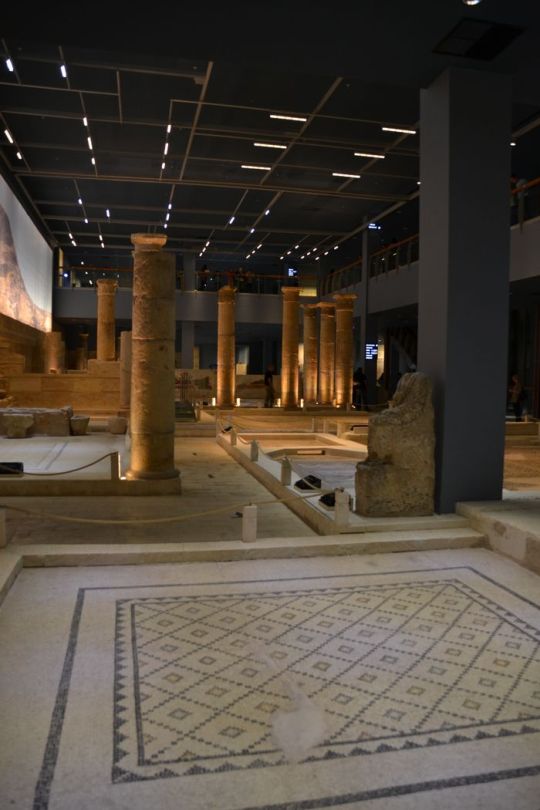
People of Yehiida
The historical mind has an almost unlimited field; and all the names it records will have to be restored’ in turn. When Mosheh led forth the people of Yehiida to the promised Yerushalahn, he really led them out of Chemi or Kebthor, not out of ‘ Egypt,’ which is a Greek corruption. And Pi-Re and all his host were drowned in the Ydm-S&pk; for of course Red Sea is a mere translation of a late Hellenic term. About the central Asian monarchies we fortunately have an imperishable and infallible record; for the great king himself inscribed on the eternal rock the names of his ancestors and his contemporaries. It is therefore inexcusable in us if we continue to write the names of Oriental sovereigns in the clumsy corruptions of ignorant Greeks.
All history contains no record more authentic than the sculptured rock of Behistun, whereon the names of the great kings stand graven in characters as unalterable as the laws of the Medes and the Persians. ‘Darius,’ we used to write in our ignorant way, ‘ became King of Persia, Susiana, Babylonia, Assyria, Arabia, and Egypt.’ Not so was it said by them of old time; not Darius, but Ddraya- vush; not king, but Khshdyathiya. So, then, the geography lessons of our grandsons will run: — ‘Darayavush was the Khshdyathiya of Pars a, of ’ Uvaja, of Bab hash, of At hard, of Arabdya, of Mudraya.’
The entire orthography of the Median and Persian Dynasties is now complete and exact. It was not ‘Cyrus’ who founded the Persian Empire, as we used to be told: it was KurausJi. The famous king who perished in the desert was Kabujiya, the son of Karaiish. And both, beside their own ancestral dominion of Pdrsa, ruled over the mighty world-famous city of Babirum, and the country which lay between the rivers Tigi’dm and Ufrd- tauvd. Oriental history is at last as simple as an infant’s ABC.
And we are now able to record the immortal tale of the war between Hellas and Pdrsa with some regard for orthographic accuracy sightseeing turkey. It was Khshaydrshd who mustered the millions of Asia in the great struggle which ended in the glorious battles of the Hot Gates and of Psyttaleia. His great generals, Ariyabhaja and Mundnniya, met the Hellenic hoplites only to court defeat; and Khshaydrshd, the son of Ddryavush, at length withdrew from a land which seemed fatal to the entire race of Hakkdmanish, and sought rest in his luxurious palace of ’ Uvaja. So will run the Hellenic histories of the future, in an orthography not quite so cacophonous and hieroglyphic as many a page in the Making of England.
Oriental literature
Oriental literature is making vast strides, and the authentic books of the East are daily brought closer and clearer to our firesides. And under the influence of this learning our very children are coming to be familiar with the new dress of the old names. We have grown out of ‘ Mahomet,’ ‘ Moslem,’ ‘ Koran,’ and ‘ Hegira,’ and we are careful to write Muhammad, Muslim, Quran, and Hejra. For our old friend Mahomet and his Koran various professors contend. Mohammed, Muhammad, Mahmoud, and Mehemet have had their day; and now they are contending whether Qur’dn or Qordn best represents the exact cacophony of the native Arabic. And so on through the whole series of famous Oriental names: the Zend-Avesta, or Avesta, the Upanishads, K’ung Foo-tsze, Tsze-Kung, and Tsze-Sze. Scholars, of course, have to tell us all about the Sukhavati- Vyulia and the Pragna-Pdramita-Hxidaya- Sdtra; but the question is, if the rising generation will ever be familiarised with these elaborate names.
It may be doubted if, after all, the exact equivalent of these foreign sounds can ever be presented to the English reader by any system of phonetic spelling; all the more when this spelling has to call to its aid an elaborate system of circumflex, diphthong, comma, italic, breathing Sh’va and Daghesh, most alien to the genius of our language. Can a man, unlearned in the respective tongues, pronounce ICung-Foo-tsze, Kurfiirst of Koln, Quran, with any real correctness? And, if he cannot, is it worth while to upset the practice of Europe for centuries, and so vast a concurrence of literature, for the sake of a phonetic orthography which is almost picture-writing in its lavish use of symbols: and all in pursuit of an accuracy which can never be consistently adopted? It may look very learned, but is it common sense?
0 notes
Photo
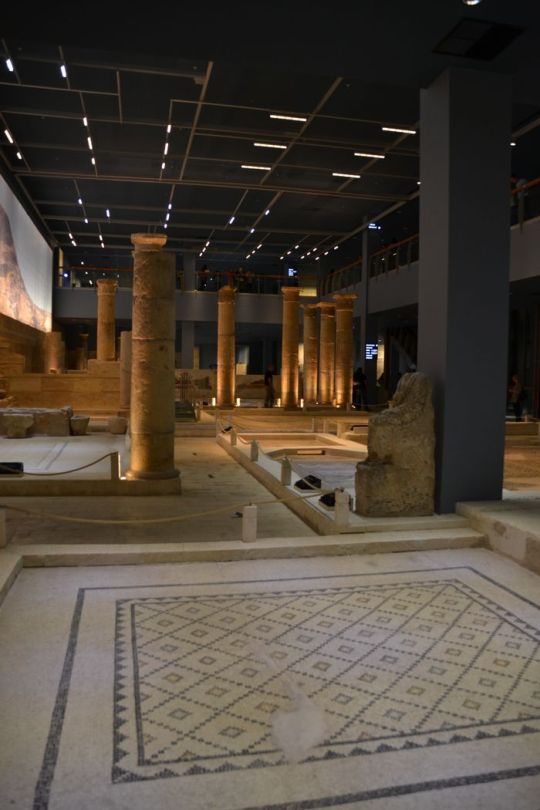
People of Yehiida
The historical mind has an almost unlimited field; and all the names it records will have to be restored’ in turn. When Mosheh led forth the people of Yehiida to the promised Yerushalahn, he really led them out of Chemi or Kebthor, not out of ‘ Egypt,’ which is a Greek corruption. And Pi-Re and all his host were drowned in the Ydm-S&pk; for of course Red Sea is a mere translation of a late Hellenic term. About the central Asian monarchies we fortunately have an imperishable and infallible record; for the great king himself inscribed on the eternal rock the names of his ancestors and his contemporaries. It is therefore inexcusable in us if we continue to write the names of Oriental sovereigns in the clumsy corruptions of ignorant Greeks.
All history contains no record more authentic than the sculptured rock of Behistun, whereon the names of the great kings stand graven in characters as unalterable as the laws of the Medes and the Persians. ‘Darius,’ we used to write in our ignorant way, ‘ became King of Persia, Susiana, Babylonia, Assyria, Arabia, and Egypt.’ Not so was it said by them of old time; not Darius, but Ddraya- vush; not king, but Khshdyathiya. So, then, the geography lessons of our grandsons will run: — ‘Darayavush was the Khshdyathiya of Pars a, of ’ Uvaja, of Bab hash, of At hard, of Arabdya, of Mudraya.’
The entire orthography of the Median and Persian Dynasties is now complete and exact. It was not ‘Cyrus’ who founded the Persian Empire, as we used to be told: it was KurausJi. The famous king who perished in the desert was Kabujiya, the son of Karaiish. And both, beside their own ancestral dominion of Pdrsa, ruled over the mighty world-famous city of Babirum, and the country which lay between the rivers Tigi’dm and Ufrd- tauvd. Oriental history is at last as simple as an infant’s ABC.
And we are now able to record the immortal tale of the war between Hellas and Pdrsa with some regard for orthographic accuracy sightseeing turkey. It was Khshaydrshd who mustered the millions of Asia in the great struggle which ended in the glorious battles of the Hot Gates and of Psyttaleia. His great generals, Ariyabhaja and Mundnniya, met the Hellenic hoplites only to court defeat; and Khshaydrshd, the son of Ddryavush, at length withdrew from a land which seemed fatal to the entire race of Hakkdmanish, and sought rest in his luxurious palace of ’ Uvaja. So will run the Hellenic histories of the future, in an orthography not quite so cacophonous and hieroglyphic as many a page in the Making of England.
Oriental literature
Oriental literature is making vast strides, and the authentic books of the East are daily brought closer and clearer to our firesides. And under the influence of this learning our very children are coming to be familiar with the new dress of the old names. We have grown out of ‘ Mahomet,’ ‘ Moslem,’ ‘ Koran,’ and ‘ Hegira,’ and we are careful to write Muhammad, Muslim, Quran, and Hejra. For our old friend Mahomet and his Koran various professors contend. Mohammed, Muhammad, Mahmoud, and Mehemet have had their day; and now they are contending whether Qur’dn or Qordn best represents the exact cacophony of the native Arabic. And so on through the whole series of famous Oriental names: the Zend-Avesta, or Avesta, the Upanishads, K’ung Foo-tsze, Tsze-Kung, and Tsze-Sze. Scholars, of course, have to tell us all about the Sukhavati- Vyulia and the Pragna-Pdramita-Hxidaya- Sdtra; but the question is, if the rising generation will ever be familiarised with these elaborate names.
It may be doubted if, after all, the exact equivalent of these foreign sounds can ever be presented to the English reader by any system of phonetic spelling; all the more when this spelling has to call to its aid an elaborate system of circumflex, diphthong, comma, italic, breathing Sh’va and Daghesh, most alien to the genius of our language. Can a man, unlearned in the respective tongues, pronounce ICung-Foo-tsze, Kurfiirst of Koln, Quran, with any real correctness? And, if he cannot, is it worth while to upset the practice of Europe for centuries, and so vast a concurrence of literature, for the sake of a phonetic orthography which is almost picture-writing in its lavish use of symbols: and all in pursuit of an accuracy which can never be consistently adopted? It may look very learned, but is it common sense?
0 notes
